
© Foteini Christofilopoulou. (Click image for larger version)
Tanztheater Wuppertal Pina Bausch
Viktor
★★★★✰
London, Sadler’s Wells
8 February 2018
Gallery of pictures by Foteini Christofilopoulou
www.pina-bausch.de
www.sadlerswells.com
Since Viktor (1986) was the first of Pina Bausch’s World Cities co-productions, it’s tempting to delve for references to Rome, the city in which her Wuppertal-based company first took up a residency. When all 10 co-productions were performed in London in 2012, Olympics year, it became evident that the location of each city was insignificant: what mattered were the associations each visit provided for Bausch’s creative imagination. In the end, they all reflected her vision of the world in which she grew up.

© Foteini Christofilopoulou. (Click image for larger version)
But when she started the World Cities project, she must have prepared her magpie mind for the specific connotations of her company’s stay in Rome. I wonder how much she might have been influenced by the Italian films she had seen, particularly those by Federico Fellini: Roma and La Dolce Vita. Fellini based himself in the Cinecitta Studios in Rome, used by many American and international film makers in the 1950s and 1960s.

© Foteini Christofilopoulou. (Click image for larger version)
Cinecitta had been constructed during the Fascist era by Benito Mussolini and his son, Vittorio. Bombed during World War II, the studios were used for two years as a camp for 3,000 displaced persons. Its history as a dream factory and a damaged shelter for refugees may well have informed Viktor‘s depiction of strangely assorted people corralled together in what looks like a bomb crater. The stage is surrounded by high walls of earth, down which a member of the cast shovels yet more earth during the piece’s three and a half hours.
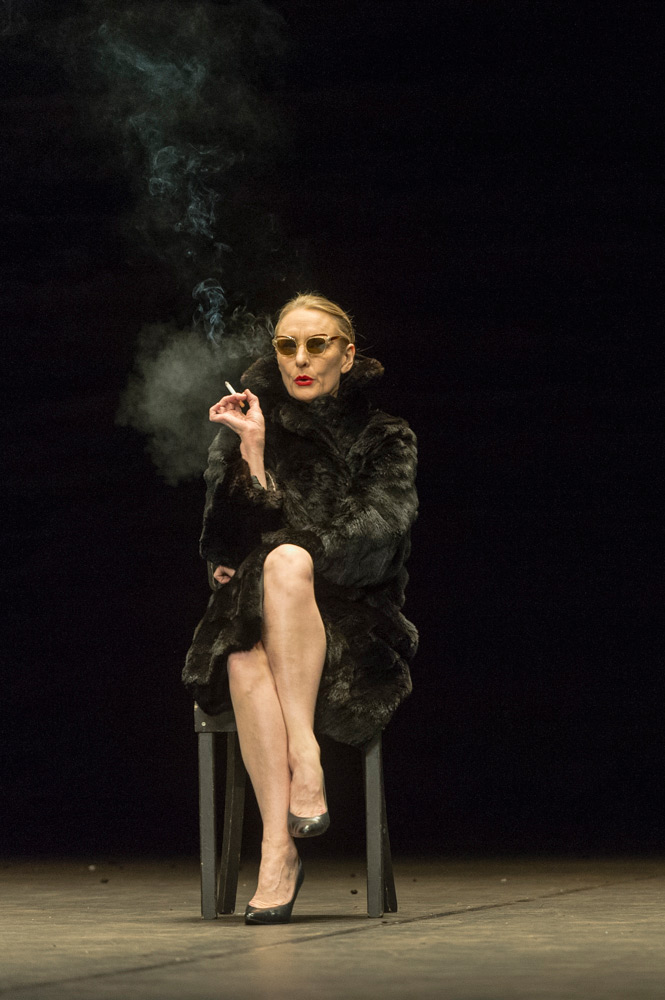
© Foteini Christofilopoulou. (Click image for larger version)
Peter Pabst’s set could also be an archaeological excavation or a grave pit. Maybe it’s simply elemental: Viktor includes water (a woman transformed into a fountain), fire (multiple cigarette smoking) and air (a man breathing heavily into a microphone). In the end, everyone will be reduced to dust. The opening and closing sequence features a post-mortem marriage ceremony, a woman smothered by a coat and a keening ritual by a distressed woman lashing her long red tresses (Breanna O’Mara).

© Foteini Christofilopoulou. (Click image for larger version)
An auction takes place, conducted by gravel-voiced Nazareth Panadero, of what might be a dead person’s pathetic worldly goods. In a later repetition of the auction, the lots for sale are small dogs. A woman barters for (live) sheep with kitchen utensils – the currency of displaced persons. Scenes of exasperated citizens going noisily about their daily existence are contrasted with startling images of seedy glamour: fur coats and sequinned dresses, a man in preposterous drag outfits.
Buxom Aida Vainieri in a skimpy outfit is objectified as a pair of breasts – a reference, surely, to a 1970s poster of a full-breasted woman advertising Fellini’s Roma. Vainieri is squeezed by men wanting her to perform for them, or to be as alluring as she is. In one sequence, men in dark suits sit in a row, putting on makeup from cosmetic bags, while women stand on chairs behind them, hitching up the skirts of their frumpy frocks. A man draws a line down the back of their legs to imitate a stocking seam – a desperate measure to keep up appearances, like the bows on top of the women’s heads.

© Foteini Christofilopoulou. (Click image for larger version)
In other scenes, the women wear pretty dresses to perform dance routines. Sometimes they come on in pairs with the men in social dances to kitsch German or Italian popular music; at other times, they undergo cheesy chorus line hoofing as though for a 1950s American musical. A parade for women flailing their long hair is echoed by a similar one for men to very different effect.
Women tend to be unpredictable, giving as good as they get or screaming interminably. Tiny Ditta Miranda Jasjfi flings her full skirt over a man’s head, stifling him; she steals cigarettes from an embracing couple, puffing and returning the smoked ends like a naughty child. She has to endure being transformed into a fountain, arms outstretched, spurting water from her mouth as a couple of men wash themselves in the stream from her lips. Meanwhile, tall Breanna O’Mara tries on and discards a series of dresses, exposing her body as a distraction.
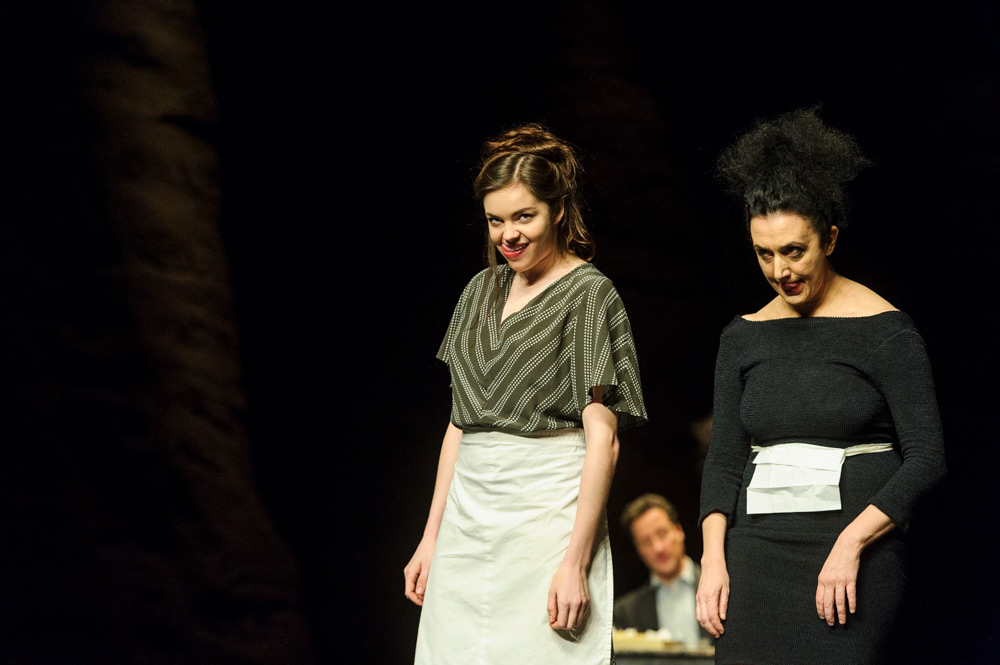
© Foteini Christofilopoulou. (Click image for larger version)
Interspersed with these activities are allusions to Bausch’s youthful training as a ballet dancer. A dreadful old teacher, fag in hand, morosely instructs a pupil. Emma Barrowman puts veal inside her pointe shoes to protect her toes as she bourrés around the stage, blonde hair hiding her face. Bausch studied with Antony Tudor in New York, and she slips in a reference to his Judgment of Paris for Rambert in 1938. Three tired, bored slags whose feet hurt can barely bring themselves to entertain a male customer drinking at a table.
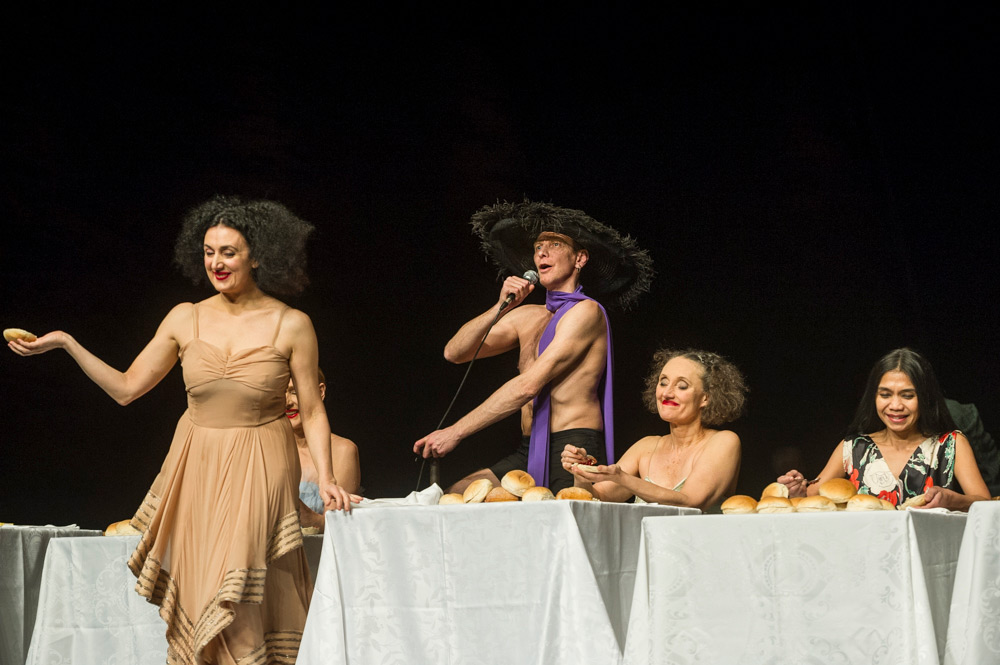
© Foteini Christofilopoulou. (Click image for larger version)
Food and drink play an important part in Bausch’s creations. In Viktor, buns are spread with jam and offered to the front rows of the stalls. A group of elderly men, sometime dance partners for the women, hold a party at the back of the stage. A man slurps spaghetti: Fellini famously encapsulated life as ‘a combination of magic and pasta’. Bausch produces her own magic in a scene where women, led by veteran Julie Shanahan, swing ecstatically in ball dresses from dangling hoops, accompanied by Fred Astaire singing ‘I’m in heaven’.
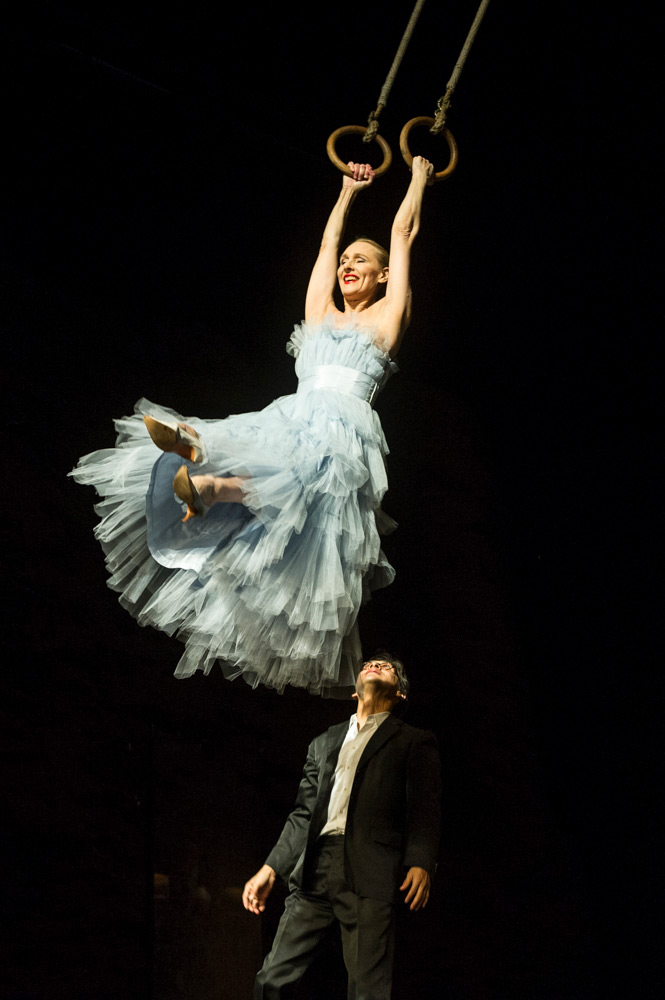
© Foteini Christofilopoulou. (Click image for larger version)
Dominique Mercy, who has been with Wuppertal company since 1974, rarely looks elated. (He became co-director of the company after Bausch’s death in 2009 and has since been replaced by Adolphe Binder.) His schtick is sardonic, mordant and mournful, and in Viktor has taken over the role of a shrouded presence lurking throughout the second half of the piece. I associate the hunched figure with the ratcatcher in MacMillan’s Manon, a harbinger of death. Or perhaps he’s Virgil, leading Dante through the afterlife. Or just a hapless avatar of the director/choreographer, trying to get people to do what she/he wants. It’s impossible to make coherent sense of a Bausch piece, whatever the source of her inspiration.

© Foteini Christofilopoulou. (Click image for larger version)
Viktor ends with a reprise of the opening sequence, complete with Shanahan apparently armless in a bright red dress and O’Mara thrashing her auburn mane. By this stage, your heart sinks at how long the cycle is going to continue. Eventually, more earth falls as the cast sit in silence, heads bowed, faces hidden by their hair. Some of the newer recruits have never worked with Bausch, but along with the veterans, they continue to reanimate her theatrical visions.













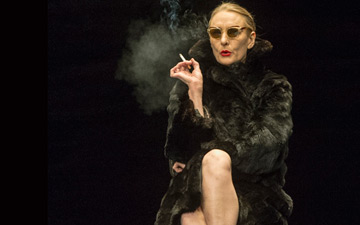
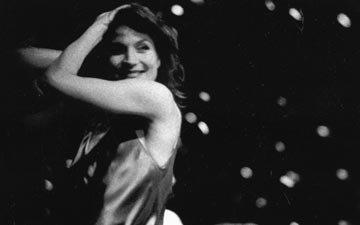
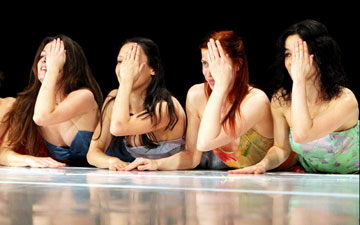

Jann Parry asked me to add this in her name:
John Mallinson informs me that Pina Bausch was in involved in Fellini’s 1983 film, E la Nave Va (And the Ship Sails On), in which she had a role three years before Viktor. It was filmed in Cinecitta between November 1982 and March 1983.